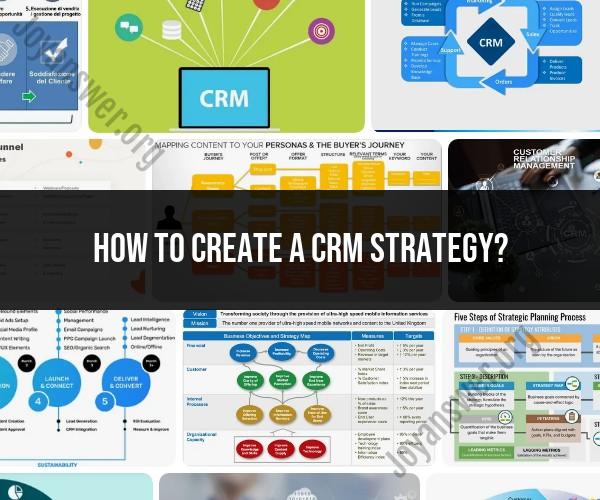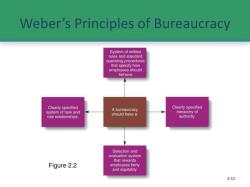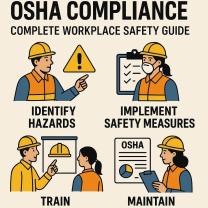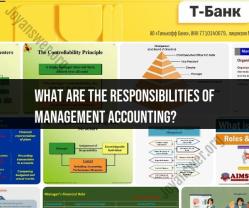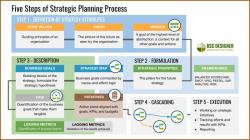How to create a CRM strategy?
Creating a Customer Relationship Management (CRM) strategy is essential for building and maintaining strong customer relationships. A well-defined CRM strategy can help your organization better understand, engage, and serve your customers. Here are steps to create an effective CRM strategy:
Define Your CRM Objectives:
- Start by clearly defining the objectives of your CRM strategy. What do you want to achieve with CRM? Common goals include improving customer satisfaction, increasing sales, enhancing customer retention, and streamlining processes.
Segment Your Customer Base:
- Divide your customer base into segments based on characteristics like demographics, behavior, preferences, and purchase history. This segmentation helps tailor your approach to different customer groups.
Collect and Centralize Customer Data:
- Gather and centralize customer data from various sources, including sales, marketing, customer support, and online interactions. Use a CRM system to store and manage this data.
Set Data Quality Standards:
- Establish data quality standards to ensure that your customer data is accurate, complete, and up to date. Regularly clean and validate data to maintain its quality.
Choose the Right CRM Technology:
- Select a CRM software solution that aligns with your business needs and objectives. Consider factors like scalability, customization options, integration capabilities, and ease of use.
Define Customer Touchpoints:
- Identify the various touchpoints where customers interact with your business, including website, social media, email, phone, and in-person interactions. Ensure consistency in messaging across these touchpoints.
Map Customer Journeys:
- Map out the customer journey to understand the steps customers take from initial contact to purchase and beyond. Identify pain points and opportunities for improvement.
Personalize Customer Interactions:
- Use customer data to personalize interactions and communications. Tailor marketing messages, product recommendations, and customer support based on individual preferences and behaviors.
Implement Automation and Workflows:
- Automate routine tasks and processes within your CRM system to improve efficiency. Use workflows to streamline sales, marketing, and customer service processes.
Train Your Team:
- Provide comprehensive training to your team members who will use the CRM system. Ensure they understand how to leverage CRM features effectively.
Develop Customer-Centric Processes:
- Design and implement processes that prioritize the customer experience. Ensure that processes are efficient and customer-centric at every stage.
Integrate CRM Across Departments:
- Promote cross-departmental collaboration by integrating CRM across sales, marketing, customer support, and other relevant departments. Encourage the sharing of customer insights and data.
Measure and Analyze Performance:
- Define key performance indicators (KPIs) related to your CRM objectives. Regularly measure and analyze CRM performance, including customer satisfaction, conversion rates, and customer retention.
Gather Customer Feedback:
- Collect feedback from customers through surveys, feedback forms, and social media channels. Use this feedback to make improvements and address customer concerns.
Iterate and Improve:
- Continuously iterate on your CRM strategy based on data-driven insights and feedback. Make adjustments to better align with changing customer needs and business goals.
Maintain Data Security and Compliance:
- Ensure that your CRM system complies with data security and privacy regulations. Protect customer data and maintain their trust.
Communicate Your CRM Strategy:
- Communicate your CRM strategy to all relevant stakeholders within your organization. Ensure that everyone understands their role in delivering an exceptional customer experience.
Adapt to Market Changes:
- Stay flexible and adapt your CRM strategy to evolving market trends, new technologies, and shifts in customer behavior.
A well-executed CRM strategy can help your organization build stronger, more lasting relationships with customers, leading to increased loyalty, repeat business, and positive word-of-mouth referrals. It's an ongoing effort that requires commitment and a customer-centric approach.
Crafting an Effective CRM Strategy: Step-by-Step Guide
Here is a step-by-step guide to crafting an effective CRM strategy:
- Define your goals and objectives. What do you want to achieve with your CRM system? Do you want to improve customer satisfaction? Increase sales? Reduce costs? Improve decision-making? Once you have a clear understanding of your goals and objectives, you can start to develop a plan to achieve them.
- Assess your needs. What are the specific requirements of your business? What features and functionality do you need in a CRM system? Consider the size of your business, your industry, and your budget.
- Research CRM solutions. There are a variety of CRM solutions available on the market. Take some time to research different solutions and compare their features and pricing. Read reviews and compare different solutions to find one that is a good fit for your business.
- Choose a CRM solution. Once you have researched different CRM solutions, select the one that is best suited for your needs. Consider the factors listed in step 2, as well as the ease of use and the support offered by the vendor.
- Develop a project plan. Your project plan should include a timeline, budget, and resource allocation plan. It should also identify the key tasks that need to be completed and the people who will be responsible for completing them.
- Implement the CRM solution. Once you have developed a project plan, you can begin implementing the CRM solution. This may involve installing the software, configuring the system, and importing data.
- Train users. Once the CRM solution is implemented, you need to train your users on how to use it. This will help to ensure that they are able to get the most out of the system.
- Monitor and evaluate the system. Once the CRM solution is in place, it is important to monitor and evaluate its performance. This will help you to identify any areas where the system can be improved.
Key Components and Considerations in Creating a CRM Strategy
When creating a CRM strategy, there are a few key components and considerations to keep in mind:
- Customer data: CRM is all about managing customer relationships, so it is important to have a good understanding of your customers. This includes collecting and analyzing customer data, such as contact information, purchase history, and preferences.
- Sales process: CRM can help you to improve your sales process by providing you with the tools and insights you need to nurture leads and close more deals. Consider how you want to use CRM to improve your sales process.
- Marketing: CRM can be used to support your marketing efforts by helping you to target your messages more effectively. Consider how you want to use CRM to improve your marketing campaigns.
- Customer service: CRM can help you to provide better customer service by providing you with a better understanding of your customers' needs. Consider how you want to use CRM to improve your customer service experience.
- Integration: CRM systems can be integrated with other business systems, such as ERP and marketing automation systems. Consider how you want to integrate your CRM system with your other business systems.
Aligning Business Goals with CRM: A Strategic Approach
To align your business goals with CRM, you need to start by identifying your key business goals. What are the most important things you want to achieve in the next year, two years, or five years? Once you have identified your key business goals, you can start to think about how CRM can help you to achieve them.
For example, if your goal is to increase sales, you can use CRM to track your leads, manage your sales pipeline, and forecast revenue. You can also use CRM to segment your customers and target them with personalized marketing messages.
If your goal is to improve customer satisfaction, you can use CRM to track customer interactions, identify customer problems, and resolve them quickly and efficiently. You can also use CRM to collect feedback from customers and use it to improve your products and services.
By aligning your business goals with CRM, you can ensure that you are using CRM to achieve your most important objectives.
By following these steps and tips, you can create and implement an effective CRM strategy that will help you to achieve your business goals.
